
Within Malaysia's confines are some of the most beautiful and spiritually sensitive temples in Southeast Asia, with a tale or two of faith, history, and skill in craftsmanship. For whatever reason-be it history, architecture, or even the search for peace and quiet in a spiritual sanctuary-Malaysia's temples offer something enriching to all who enter their precincts.
Batu Caves Temple
One of the more spectacular and well-known temples in the country is Batu Caves. Situated just outside Kuala Lumpur, this remarkable hill of limestone shelters a series of cave temples serving as the chief shrine pilgrimage of Hindu devotees.The temple showcases Lord Murugan, the Hindu god of war, as its main deity. It is most noted for the 42.7-meter-tall gold statue of Lord Murugan right at the entrance to the temple complex.

Batu Caves Temple (Source: Malaysia)
Kek Lok Si Temple
It is the largest Buddhist temple in the country and features among the largest in Southeast Asia, located in Penang. This magnificent temple complex is set atop a hill in Air Itam and commands a great panoramic view of Georgetown and its surroundings. Its style uniquely fuses traditional Chinese, Thai, and Burmese architectural elements, it is a symbol of different Buddhist traditions coming into unity.

Kek Lok Si Temple (Source: Wikipedia)
Thean Hou Temple
Thean Hou is a magnificent six-tiered Chinese temple that faces the sea and stands on a hill in Kuala Lumpur. The shrine is dedicated to Mazu, the sea goddess, and symbolizes the essence of Chinese religious architecture. This temple was constructed from 1981 to 1987, merging modern ways of construction with traditional Chinese design.

Thean Hou Temple (Source: ForeverVacation)
Sri Mahamariamman Temple
The Sri Mahamariamman Temple testifies to the enriching Indian heritage of the country and is the oldest Hindu temple in Kuala Lumpur. Founded in 1873, it remains to this day one of the most crucial places of worship for the Hindu community in the city. The purpose of this temple is to honor the mother goddess of South India, Mariamman, believed to protect her devotees from ailments and ill happenings.
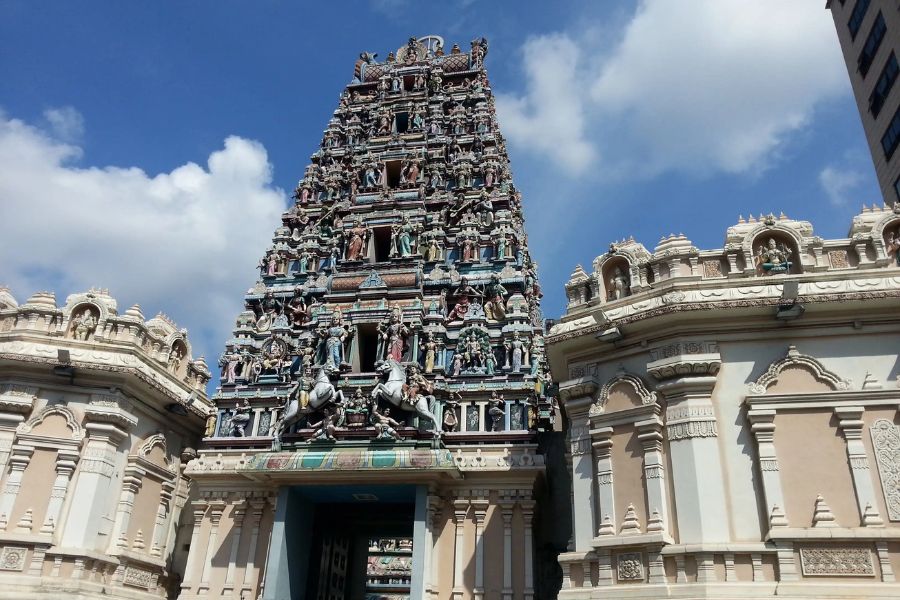
Sri Mahamariamman Temple (Source: MalaysiaTravelGuide)
Sam Poh Tong Temple
Nestled among the limestone hills of Ipoh, Sam Poh Tong Temple is the biggest cave temple in this country, known for its peaceful ambiance and exciting architecture. According to legend, the temple was founded by a monk from China who, during a tour to the area, had stumbled upon the cave and thought that it was the proper place to retreat to in spirituality.

Sam Poh Tong Temple (Source: Flickr)
The highlight of Sam Poh Tong is the serene fish pond surrounded by lush vegetation and unobtrusive pathways. It also has an excellent vantage point of Ipoh from atop the limestone hill, making the temple rather appealing. Inside the caves of the temple are Buddhist statues and altars that create a highly reflective, tranquil atmosphere.

Natural beauty at Sam Po Tong Temple (Source: Footsteps)
Cheng Hoon Teng Temple
Cheng Hoon Teng Temple is a place of worship and the oldest operating Chinese temple in Malaysia, it is located in Malacca, a UNESCO World Heritage town. Suffice it to say that this is a historical temple, dating back to 1645, which bears testimony to the Chinese heritage in the country. The three major Chinese religions are housed within this temple: Taoism, Confucianism, and Buddhism.
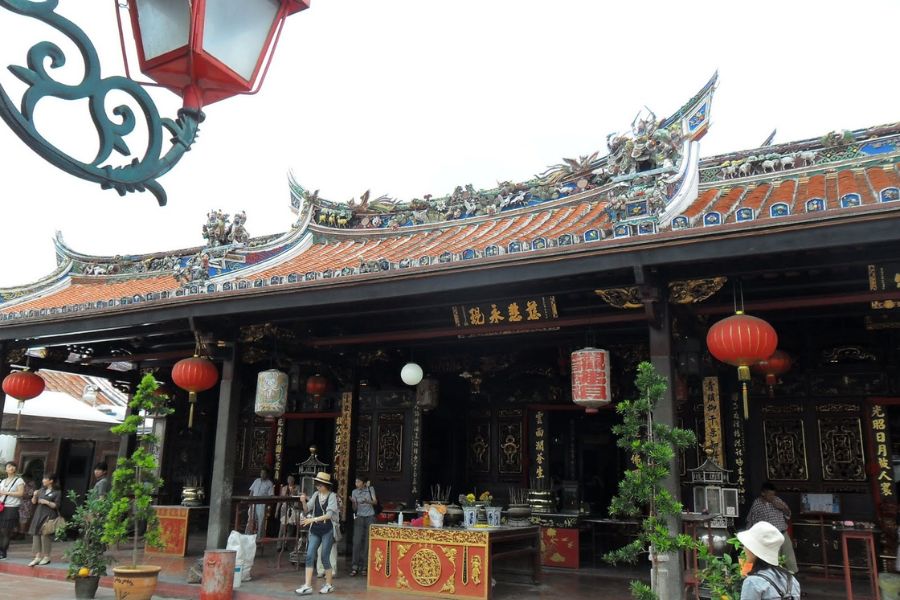
Cheng Hoon Teng Temple (Source: GoMelaka)
Wat Chetawan Temple
The Wat Chetawan is perhaps one of the most impressive Thai Buddhist temples in Malaysia, set amidst the suburb of Petaling Jaya. Built with the patronage of the Thai royal family in 1957, the temple stands to serve the Thai community here in this country as their spiritual home. Dominating the temple compound are the beautifully gold-foiled pagodas, murals, and statues of the Buddha in different postures.

Wat Chetawan Temple (Source: foodveler)
The shining gold spires of Wat Chetawan greet visitors to its colored frescoes and sumptuously decorated prayer halls. The place serves as a center for meditation and praying for people both locally and from aboard. It is an alive and spiritual destination since there are many Buddhist festivals held within it in a year.

Tourist visiting Wat Chetawan Temple (Source: Selangor)
Dhammikarama Burmese Temple
On the island is the only one Burmese Buddhist temple in Penang, called Dhammikarama Burmese Temple. This serene temple was built as far back as 1803 and is quite easily recognized with its two hallowed golden pagodas, wonderfully landscaped gardens, and a tall marble Buddha statue.

Dhammikarama Burmese Temple (Source: Wikipedia)
Most prominent among these is the towering golden stupa that acts as an axis for this temple. Equally appealing, the interior of this temple has colorful and intricate murals and carvings depicting scenes from the life of the Buddha. Even the grounds of the temple are given a place in the planning, housing a koi fish-filled pond to add to the general tranquility.
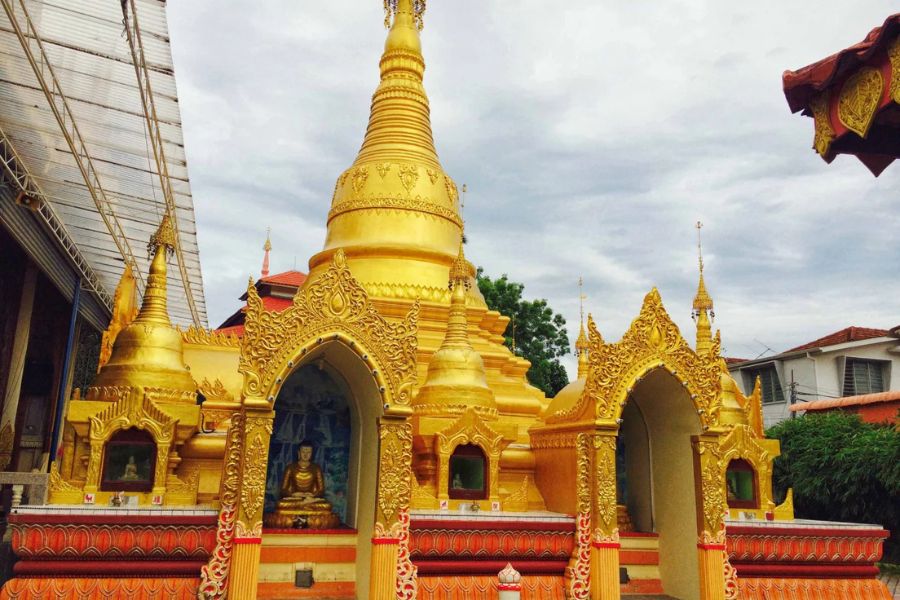
Buddhist temple in Dhammikarama (Source: cattanblog)
Kuan Yin Temple
One of the oldest and most highly regarded Chinese temples in Penang is the Kuan Yin Temple. This temple was constructed to honor Kuan Yin, or the Goddess of Mercy, by Chinese immigrants back in the early 19th century. Over the years, this has acted as a point where people unite to pray and worship, this is generally held by the community for various types of gatherings.
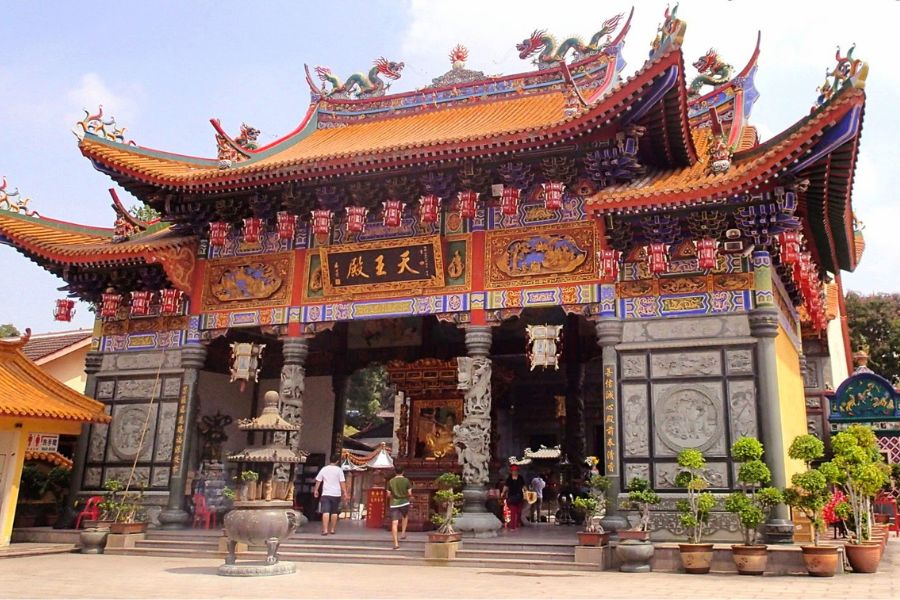
Kuan Yin Temple (Source: Footsteps)
A fine example of traditional Chinese craftsmanship, the intricately designed roof comprised large incense burners and stone pillars carved from ivory. Housing altars to Kuan Yin, as well as a number of other deities, one could also have seen the devotees outside lighting incense and offering flowers and fruits.
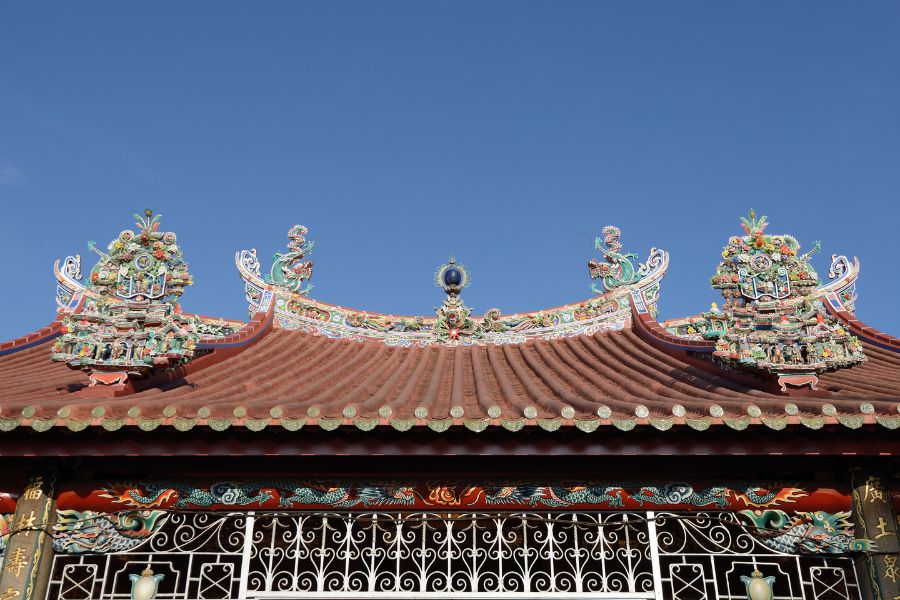
Enchanting architecture at Kuan Yin Temple (Source: ArrivalGuide)
Snake Temple
The Snake Temple in Penang, probably Malaysia's most unusual and one of its most fascinating temples is dedicated to Chor Soo Kong-a Buddhist monk who, according to a legend, had healing powers. A number of pit vipers live in this temple.
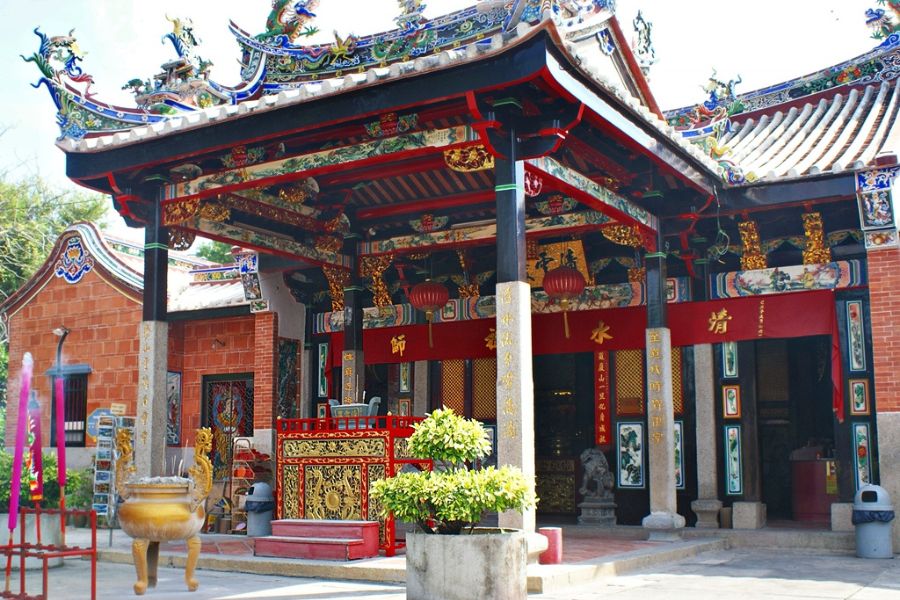
Snake Temple (Source: Wikipedia)
At the Snake Temple, visitors are able to appreciate the unique combination of Buddhist architecture with nature itself, as the snakes will sit and rest calmly around the statues and altars that these temples are made from. The Snake Temple will represent a rather different and interesting experience for those interested in local folklore and spiritual experiences.

Snake branch in snake temple (Source: Flickr)
Read more: Malaysia Tours 5 days
Dress Appropriately
Temples in this country are a place of worship, it is important to dress modestly when visiting. Make sure your shoulders and knees are covered, and stay away from anything too revealing. Some temples will have sarongs available for visitors to use, but it is always better to come prepared.
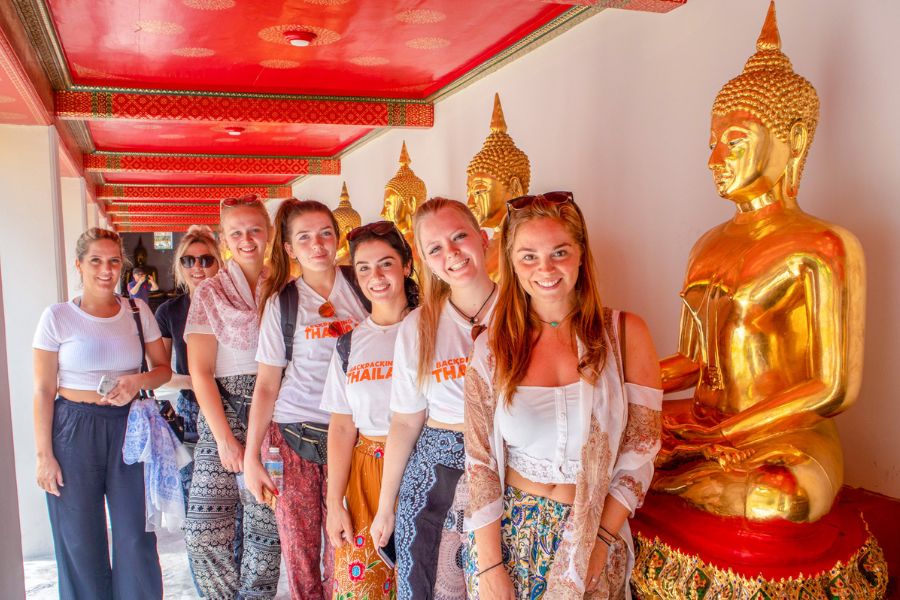
Tourist dress properly visiting temple (Source: BackpackingTours)
Respect Local Customs
Many temples require visitors to remove their shoes prior to entering the halls of prayer or any other area that is considered sacred. Pay attention to any signs and follow the rules accordingly. Also, avoid touching religious statues or offerings unless you are invited by the staff of the temple.
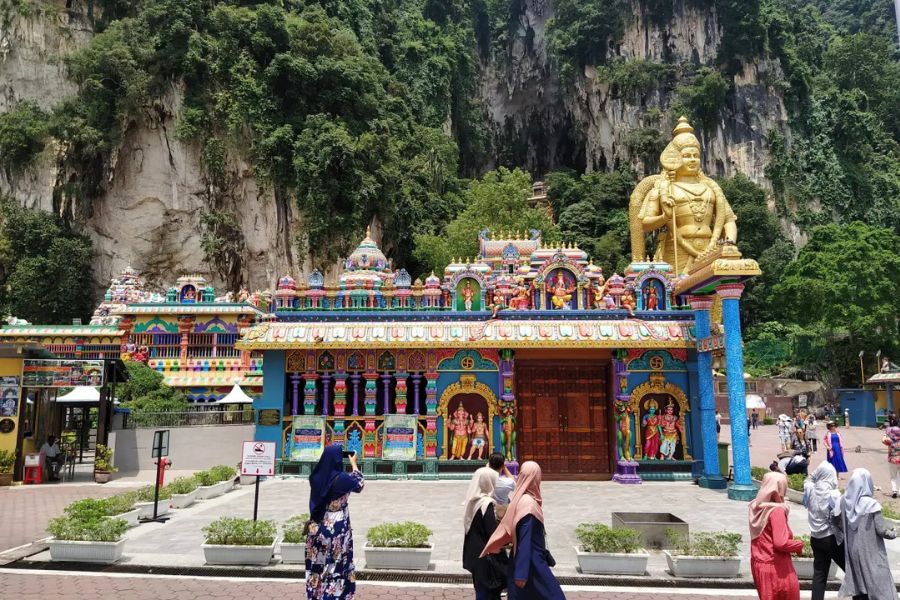
Traveler visiting famous temples in Malaysia (Source: BonVoyage)
Plan Your Visit Wisely
The best time to visit temples would be early in the morning and late in the afternoon since most places would have avoided crowds and would be relatively peaceful. Weekdays are never too crowded, while weekends and public holidays in conjunction with religious festivals attract large groups of worshippers and tourists alike.
These temples in Malaysia reflect the rich cultural and spiritual heritage of the country. As much as one may be in awe of the magnificent structure, it is important to remember certain ground manners one should adhere to in the mosques in this country. Take in the intense beauty that makes every temple a real treasure of culture and come visit these temples with Asia King Travel for the best and most professional experiences ever.
Read more: Malaysia Tours 7 days